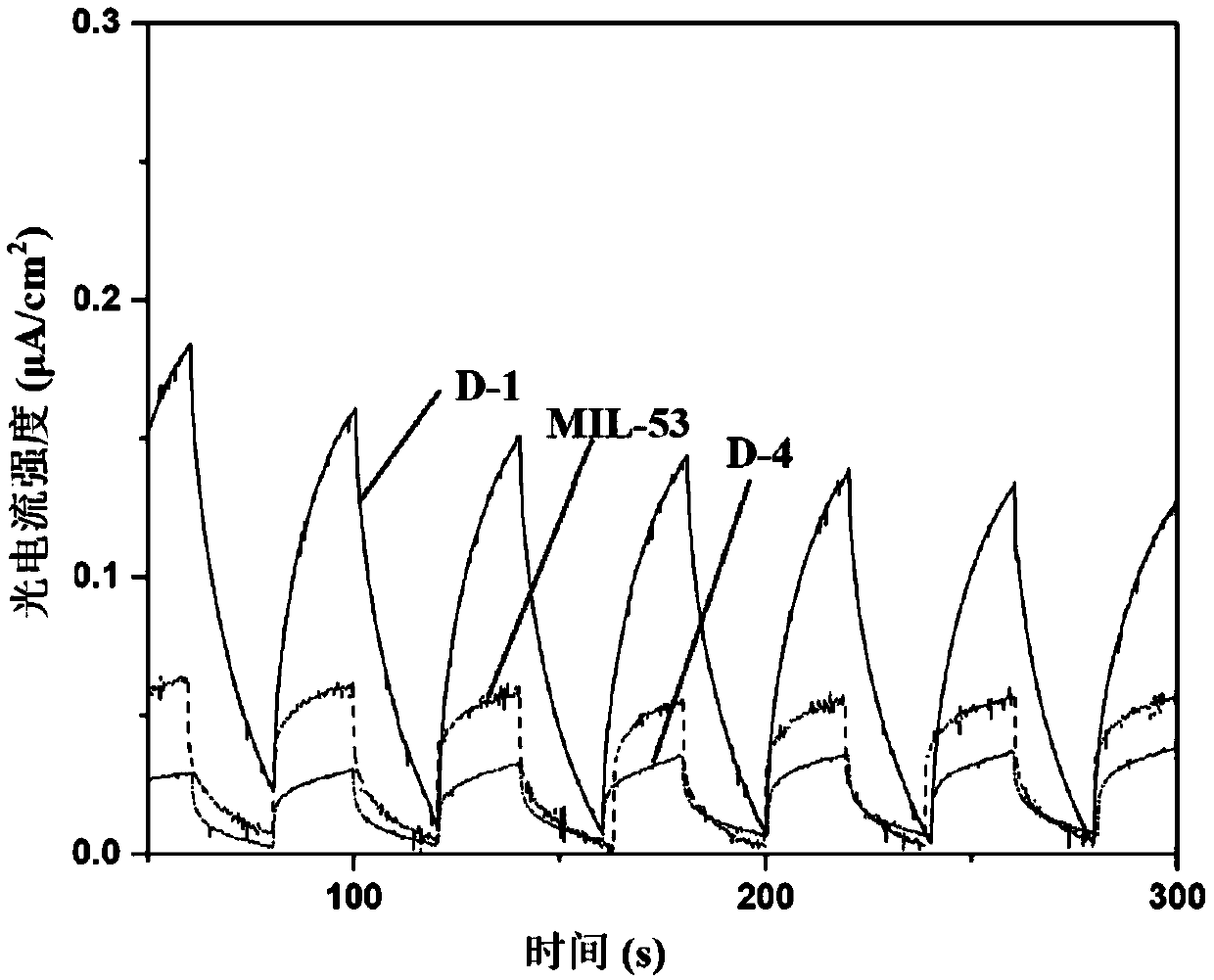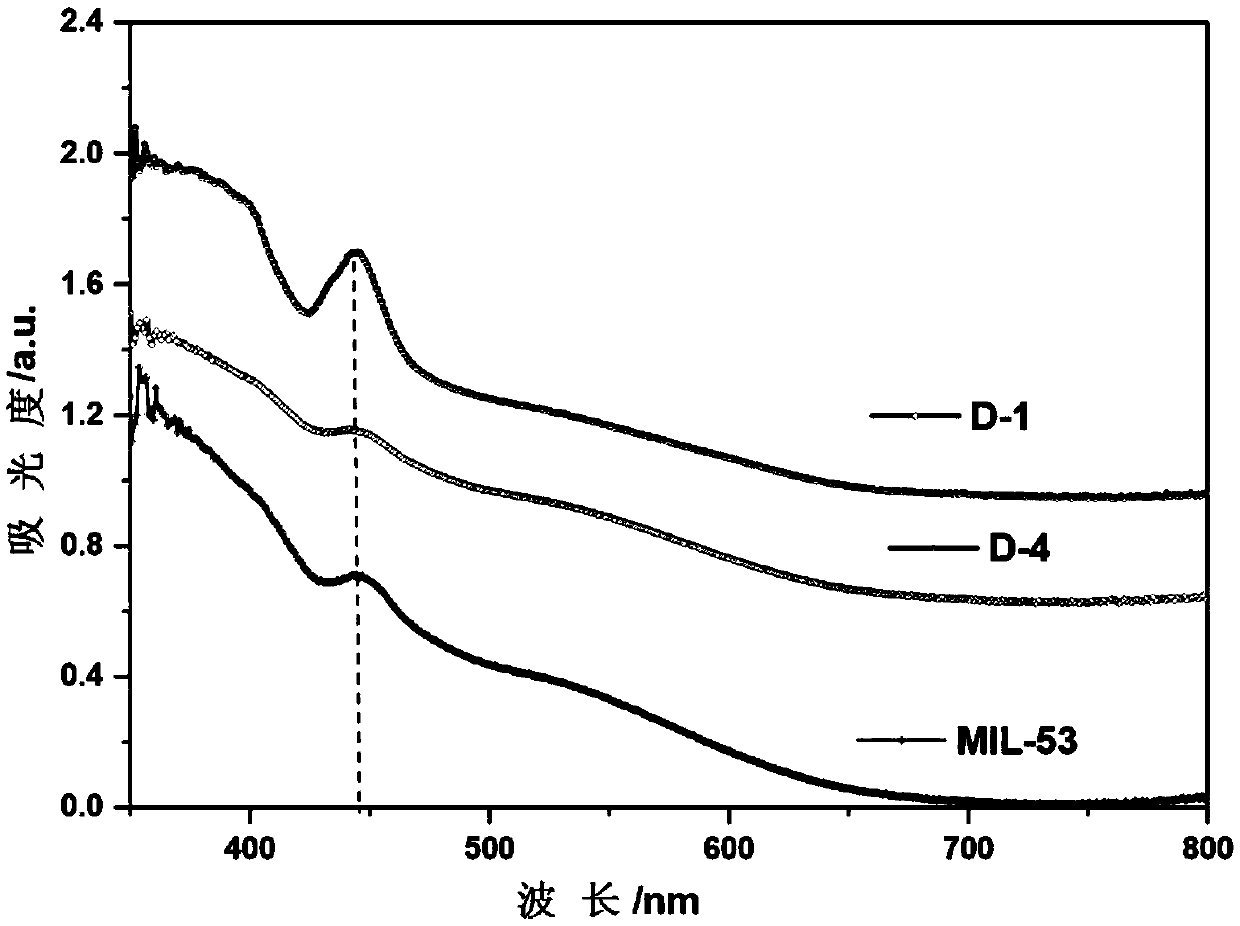Method for photocatalytic degradation of organic pollutants by using defective metal organic framework photocatalyst
A metal-organic framework and organic pollutant technology, which is applied in the application field of photocatalysis, can solve the problems of easy dissolution of toxic metal ions, potential environmental harm, poor treatment effect, etc., and achieves easy recovery and reuse, low cost, good quality Use value and effect of application prospects
- Summary
- Abstract
- Description
- Claims
- Application Information
AI Technical Summary
Problems solved by technology
Method used
Image
Examples
Embodiment 1
[0037] A method for photocatalytically degrading organic pollutants using a defect-type metal-organic framework photocatalyst, specifically using a defect-type MIL-53 metal-organic framework photocatalyst to photocatalyze degradation of tetracycline in water, comprising the following steps:
[0038] Take defective metal-organic framework photocatalysts (D-1, D-2, D-3, D-4, D-5, D-10) and perfect MIL-53 metal-organic framework photocatalysts (MIL-53), Add 50 mg each into 100 mL tetracycline solution with a concentration of 20 mg / L, ultrasonically uniform, and react for 60 min in the absence of light (magnetic stirring). Illuminated for 150 minutes, the photocatalytic degradation reaction was carried out, and the photocatalytic degradation of tetracycline in the water body was completed.
[0039] In this example, the defect-type metal-organic framework photocatalysts (D-1, D-2, D-3, D-4, D-5, D-10) used are specifically defect-type MIL-53 metal-organic framework photocatalysts. ...
Embodiment 2
[0053] A method for photocatalytically degrading organic pollutants using a defect-type metal-organic framework photocatalyst, specifically using a defect-type MIL-53 metal-organic framework photocatalyst to perform photocatalytic degradation of tetracycline in water with different concentrations, comprising the following steps:
[0054] Get 4 parts of defective metal-organic framework photocatalysts (D-1) prepared in Example 1, every part of 50mg, add to the tetracycline solution that concentration is 10mg / L, 20mg / L, 30mg / L, 40mg / L respectively (volume is 100mL), ultrasonic evenly, react in the absence of light for 60min (magnetic stirring), after reaching the equilibrium of adsorption and desorption, under the condition of visible light with wavelength λ > 420nm, light for 150min, carry out photocatalytic degradation reaction, complete the Photocatalytic degradation of tetracyclines in water.
[0055] Sample 3mL every 30min, measure the characteristic peak value of tetracycl...
Embodiment 3
[0058] A method for photocatalytically degrading organic pollutants using a defect-type metal-organic framework photocatalyst, specifically utilizing a defect-type MIL-53 metal-organic framework photocatalyst to degrade tetracycline cyclically, comprising the following steps:
[0059] (1) Take 50 mg of the defect-type metal-organic framework photocatalyst (D-1) prepared in Example 1, add it to 100 mL of tetracycline solution with a concentration of 20 mg / L, ultrasonicate evenly, and react for 60 min in the absence of light (Magnetic stirring), after reaching the adsorption-desorption equilibrium, under the condition of visible light with wavelength λ>420nm, light for 150min, carry out photocatalytic degradation reaction, and complete the photocatalytic degradation of tetracycline in the water body.
[0060] (2) After the photocatalytic degradation reaction in step (1) was completed, the remaining samples were collected and dried. Under the same experimental conditions, the tetr...
PUM
| Property | Measurement | Unit |
|---|---|---|
| specific surface area | aaaaa | aaaaa |
| photocurrent | aaaaa | aaaaa |
| catalytic efficiency | aaaaa | aaaaa |
Abstract
Description
Claims
Application Information
 Login to View More
Login to View More - R&D
- Intellectual Property
- Life Sciences
- Materials
- Tech Scout
- Unparalleled Data Quality
- Higher Quality Content
- 60% Fewer Hallucinations
Browse by: Latest US Patents, China's latest patents, Technical Efficacy Thesaurus, Application Domain, Technology Topic, Popular Technical Reports.
© 2025 PatSnap. All rights reserved.Legal|Privacy policy|Modern Slavery Act Transparency Statement|Sitemap|About US| Contact US: help@patsnap.com



